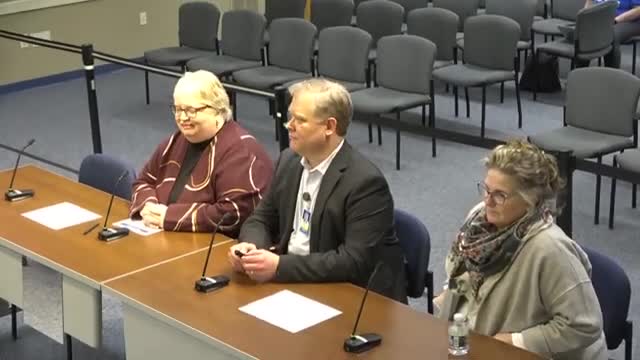School start time changes boost focus and reduce behavior issues
November 13, 2024 | Rochester Public School District, School Boards, Minnesota
This article was created by AI summarizing key points discussed. AI makes mistakes, so for full details and context, please refer to the video of the full meeting. Please report any errors so we can fix them. Report an error »

In a recent government meeting, officials provided an update on the implementation of new school start times, highlighting both benefits and challenges experienced across elementary and secondary schools.
At the elementary level, educators reported that students are more focused and alert during morning classes, leading to improved learning outcomes. Teachers noted a decrease in afternoon behavioral issues, attributing this to shorter school days that prevent fatigue. Additionally, there has been an increase in breakfast participation, with more students opting to eat at school rather than at home. However, a significant drawback has emerged: the need to reschedule staff meetings and IEPs, which previously took place in the morning, now must occur after school, complicating logistics for educators.
Conversely, secondary schools have observed a positive shift in student engagement during morning hours, with fewer instances of students falling asleep in class. High school staff reported enjoying the collaborative time available before students arrive. Initial concerns regarding transportation delays after school have been addressed through adjustments in bus schedules, resulting in most buses departing within 10 to 15 minutes of dismissal.
Middle schools, however, are experiencing an increase in afternoon behavioral issues, likely due to longer school days. The after-school environment has also faced challenges as the district expands its Student After Care (SAC) program, necessitating a reorganization of space and staffing to accommodate increased demand. Despite these hurdles, the SAC program has seen significant growth, adding over 300 spots for families this fall.
The meeting also touched on self-transportation trends, revealing that 1,485 elementary students are self-transporting to district-wide option schools, with notable numbers opting out of their designated schools for alternative calendars. The district is working to streamline the self-transport application process and has successfully reduced waiting lists for various programs.
Overall, while the transition to new school start times has yielded positive educational outcomes, the district continues to navigate logistical challenges and adapt to the evolving needs of its students and families.
At the elementary level, educators reported that students are more focused and alert during morning classes, leading to improved learning outcomes. Teachers noted a decrease in afternoon behavioral issues, attributing this to shorter school days that prevent fatigue. Additionally, there has been an increase in breakfast participation, with more students opting to eat at school rather than at home. However, a significant drawback has emerged: the need to reschedule staff meetings and IEPs, which previously took place in the morning, now must occur after school, complicating logistics for educators.
Conversely, secondary schools have observed a positive shift in student engagement during morning hours, with fewer instances of students falling asleep in class. High school staff reported enjoying the collaborative time available before students arrive. Initial concerns regarding transportation delays after school have been addressed through adjustments in bus schedules, resulting in most buses departing within 10 to 15 minutes of dismissal.
Middle schools, however, are experiencing an increase in afternoon behavioral issues, likely due to longer school days. The after-school environment has also faced challenges as the district expands its Student After Care (SAC) program, necessitating a reorganization of space and staffing to accommodate increased demand. Despite these hurdles, the SAC program has seen significant growth, adding over 300 spots for families this fall.
The meeting also touched on self-transportation trends, revealing that 1,485 elementary students are self-transporting to district-wide option schools, with notable numbers opting out of their designated schools for alternative calendars. The district is working to streamline the self-transport application process and has successfully reduced waiting lists for various programs.
Overall, while the transition to new school start times has yielded positive educational outcomes, the district continues to navigate logistical challenges and adapt to the evolving needs of its students and families.
View full meeting
This article is based on a recent meeting—watch the full video and explore the complete transcript for deeper insights into the discussion.
View full meeting
